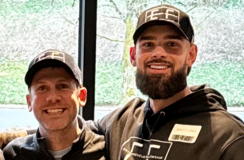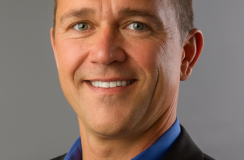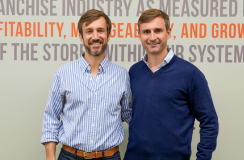asey Allen made the move from founder to acquirer partly because he thought it would be less stressful. He’s been proven right in the long term — but he’s still had to weather major storms.
Casey put e-commerce coffee business Barista Warrior under LOI in November 2019, but things moved slowly. Then the COVID-19 pandemic froze the credit markets.
At first, Casey considered pulling out, but then he realized, “We were going to be selling coffee equipment designed to be used at home, at a time when people were stuck there.”
This fact wasn’t lost on the seller. By the time they were ready to close, Barista Warrior had doubled its business, and the owner wanted twice as much money. Casey persisted, worked out a deal, and officially acquired the business in June 2020.
"E-commerce and content are very different in their unit economics... E-commerce can be a cash monster... You're trying to keep pace with inventory that's flying out the door... On the flip side of that, in the content model, the margins at IntMath were like 95%."
He wanted to build out a diverse portfolio, so he decided to follow up Barista Warrior by buying a content business. He chose the educational site Integrated Mathematics, or IntMath, which was created by a math professor in 1997.
IntMath looked like an internet relic, but its creator’s credentials had made it a valuable source for other credible sites to link to. The site gets a ton of traffic, even in 2020, thanks to the great SEO that comes from being 24 years old.
Casey has kept the content high in quality and low in fluff, and IntMath now has one million monthly users.

In this episode of Acquiring Minds, Casey explains why witnessing multiple acquisitions made him shift his focus from starting businesses to buying existing ones, why a larger investment can be less risky on balance, and the pros and cons of an SBA loan.
Check out:
✳️ Top takeaways from the episode
✳️ Episode highlights with timestamps
Acquisition Entrepreneur: Casey Allen
💵 What he acquired: It took grinding his way through founding his own startup and working for others — and some input from his wife — for Casey to realize that acquiring an existing business might be a less intense strategy. He bought Barista Warrior, an e-commerce site selling home coffee supplies, in 2020. He then acquired Interactive Mathematics, or IntMath, a 24-year-old educational content site with a huge audience.
💡 Key quote: “Having worked at a startup — which is a big grind as you push towards the exit — combined with doing my own thing, I was ready to step into something that had existing revenue and profit, where I could use my expertise to grow it in a reasonable manner, using the cash flow that it turned out.”
👋 Where to find him: Twitter | LinkedIn

Acquisition Tips From the Episode
Top takeaways from this week’s conversation
🛒 Don’t Underestimate the Value of SBA Funding (or the Difficulty of Applying for It)
Small Business Administration (SBA) loans can make all the difference in your ability to acquire a business — but accessing them is a rigorous process. You need to have your financial house in order by the time you begin. “Otherwise the process can drag on and push your closing further out,” Casey says.
To put the value of SBA funding in perspective, consider Casey’s first acquisition, Barista Warrior. The final purchase price was $970,000. Casey got $240,000 in a seller note tied to future performance, and put down 20% himself ($194,000). The SBA paid the remaining $536,000. With this financing, you don’t need $1 million on hand to acquire a $1 million company.
💰 E-Commerce vs. Content
Having acquired e-commerce business Barista Warrior, Casey made a strategic decision to follow up by buying content business IntMath. Whereas Barista Warrior requires more working capital, IntMath generates greater cash flow and higher margins.
Casey understood that diversifying his portfolio would reinforce each respective business. “A business like Barista Warrior that’s growing very aggressively can be a cash monster, because you’re trying to keep pace with the inventory that’s flying out the door, and hold on to working capital,” Casey says. “With a content business like IntMath, the freer flow of cash allows you to experiment more with things that interest you.”
💸 More Money, Fewer Problems
Acquiring a business with a high price tag might seem like a gamble. But in fact, the risk tends to increase when you buy something cheaper, because in most cases the quality of the business is lower.
Casey points out that with the recent changes in SBA policy, and greater access to capital, there’s a lot less standing in your way now, compared to when he was searching for his first acquisition.
“In some cases, you can pay $2.5 million for a business and only put down $250,000,” he says. “You’re going to be able to invest in something that’s of higher quality, which means higher cash flow and higher revenue.”
Episode Highlights
Inflection points from the show
[2:58] An insider’s view: After working as a management consultant in the healthcare industry, Casey was hired as an early employee of a startup that was acquired by private equity. This was his earliest hands-on exposure to the acquisition process.
[7:03] Unfortunate timing: Casey started the process of buying e-commerce business Barista Warrior in November 2019. A few months later, the lender started “dragging their feet,” and slowed Casey’s timeline down by a week — the very week the U.S. went into lockdown over COVID-19, and the credit markets froze.
[10:00] Demand increase: Just as Casey was about to close, Barista Warrior suddenly took off, doubling its business. The seller wanted to double the sale price to match. Instead, Casey put a premium in a seller note tied to performance. In other words, in order for the seller to receive his new asking price, Barista Warrior would have to hit certain performance benchmarks. Casey officially took over Barista Warrior in June 2020.
[12:41] Machine to bean: As the world began to open up again, fewer people were willing to invest in coffee machines. Casey treated this decline in business as an opportunity. Barista Warrior started selling coffee, which generates more recurring revenue than home brewing equipment, which is only replaced every few years.
[13:35] SBA funding has built a new playing field: To get Small Business Administration (SBA) funding to acquire Barista Warrior, Casey had to speak to lots of lenders. In 2020, the government started backing more SBA loans, and the CARES Act provided incentives to the SBA to lend. But be prepared for a complicated application process. “You need to buckle down and have all your ducks in a row financially,” Casey says.
[15:17] The acquiring price: Casey ultimately acquired Barista Warrior for $970,000, putting in 20% of his own money and financing the rest with a $240,0000 seller note and loan from the SBA. In 2019, the business’s margins were around 17%, and it closed out the year with just under $1 million in revenue. By the end of 2020, revenue was up to $1.7 million, with an average margin of 35%.
[20:58] Looks can be deceiving: Next, Casey decided to buy content business Interactive Mathematics, a website created by a math professor to help users improve their math skills. It looks retro, but don’t let that fool you: The site gets 12 million visits a year. Casey was most excited by its trailing 12 months (TTM), which were very strong despite the pandemic. Historical data suggests that when kids are back at school, the traffic will soar.
[28:42] How to use MicroAcquire without getting burned: Casey found Intmath on MicroAcquire. He describes the platform as, “a bit like the Wild West. It’s an unmanaged marketplace for very high ticket things.” The risk with a site like MicroAcquire is that potential buyers picture themselves acquiring the next Facebook at the bottom of its value, when that’s extremely unlikely.
[31:00] The strength in diversification: Casey could have sat tight after acquiring Barista Warrior, but by going on to buy IntMath, he created a portfolio of two very different businesses that serve as counterweights to each other. Barista Warrior sells physical products and requires more working capital to operate, whereas IntMath is a content business where cash flows more freely, so the margins are higher.
[34:40] Stick with what you know: Before you start acquiring, it helps to have experience in businesses in the niche you’re interested in. Either start one yourself, or focus on an area that you’ve already spent time in, where you have a baseline of expertise. This will give you a deeper understanding of what you’re getting yourself into. “[Starting a company] can be exhausting, but it’s an incredible education,” Casey says.
[37:46] The more money you invest, the more opportunities you’ll find: Startups reach critical mass towards success once they reach around $1 million in revenue. In acquisitions, the initial investment is considerably lower, but the dynamics are the same: the larger the revenue, the lower the risk. “Once you get to the $250,000 mark, in terms of how much you’re investing, you can apply leverage to invest in something that’s higher quality. There will be more cash flow and higher revenue,” Casey says.
Links & Mentions
✅ “Buy Then Build” by Walker Deibel
✅ “Entrepreneurial Finance” by Steven Rogers and Roza Makonnen
✅ Northwestern University’s Entrepreneurship Through Acquisition Course
✅ U.S. Small Business Administration (SBA) 7(a) Loan Program




%20-%20thumbnail.png)



%20-%20thumbnail.png)

.png)




%20-%20thumbnail.png)















%20-%20thumbnail.png)












































































